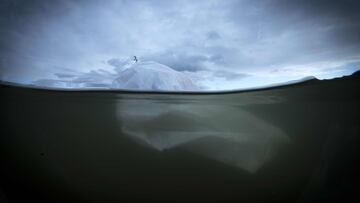Where is the Great Pacific Garbage patch? How big is it and what’s its path?
The Great Pacific Garbage Patch is testament to the big amounts of plastic waste that humans generate. As we continue to throw, the patch continues to grow.

The Great Pacific Garbage Patch is a huge accumulation of plastic and other debris that is found in the Pacific Ocean. It is located between Hawaii and California, in the North Pacific Ocean.
Garbage patches are formed by rotating whirlpool-liked ocean currents known as “gyres”, which pull marine debris towards the center into a garbage vortex. The Great Pacific Garbage Patch, the most famous collection of sea trash, is bound by the North Pacific Gyre, the biggest one of five in the planet.
How big is the Great Pacific Garbage Patch?
The exact size of the patch is difficult to determine, as it is constantly moving and changing in size and shape, but it is estimated to be around twice the size of Texas, according to CNN.
The term “patch” may lead people to believe that the garbage is spread across the surface of the ocean. It is not a solid mass, but rather a collection of plastic debris that extends from the surface of the water all the way to the ocean floor.
The debris is concentrated in certain areas due to ocean currents and wind patterns, but it is not a fixed location or a defined “patch” like a traditional land-based landfill. Instead, the patch is spread out over a large area, and is estimated to be made up of around 80,000 metric tons of garbage. It is believed to contain some 1.8 trillion pieces of plastic, majority of which comes from the fishing industry.
READ ALSO:
Garbage patches harm the sea
The patch has significant environmental and ecological impacts, including harm to marine life and potential effects on human health.
Research on the Great Pacific Garbage Patch has increased in recent years, and there have been several studies conducted to better understand the composition and dynamics of the patch.
Scientists use a variety of methods to study this accumulation of trash, including satellite imaging, trawling, and drone surveys. It is difficult to study garbage patches first hand and up close because they are in remote areas in the middle of the ocean.






